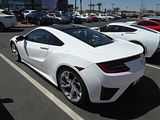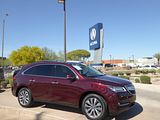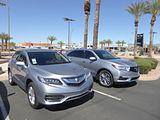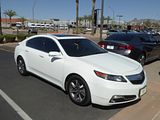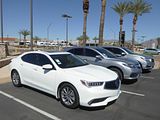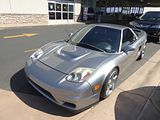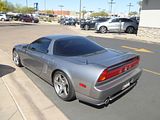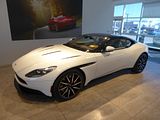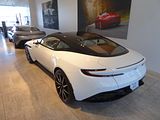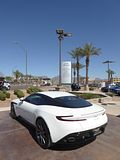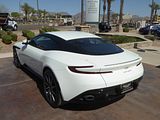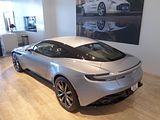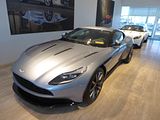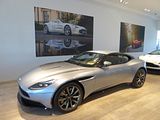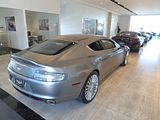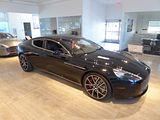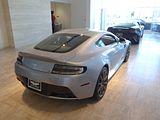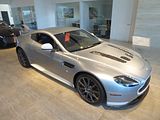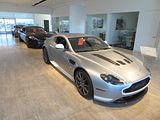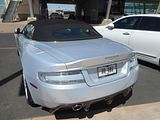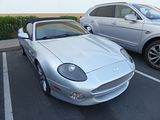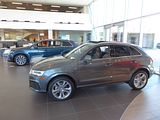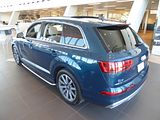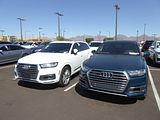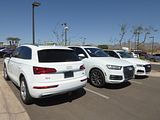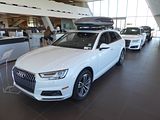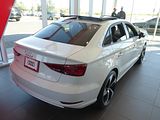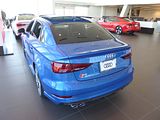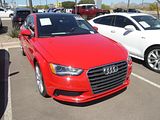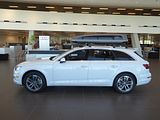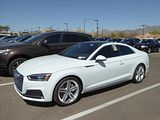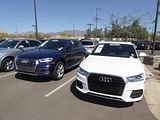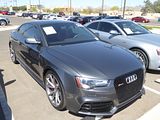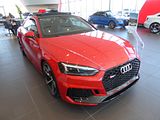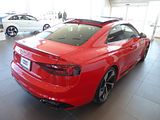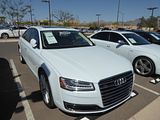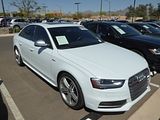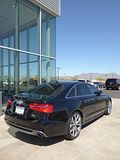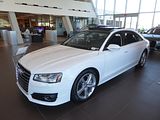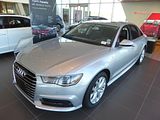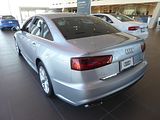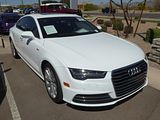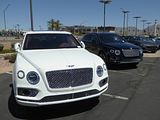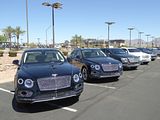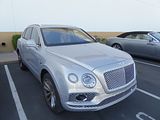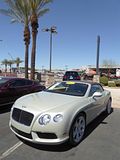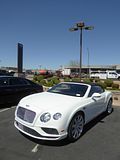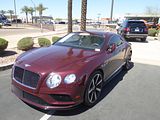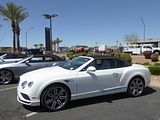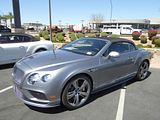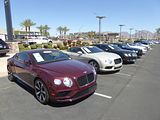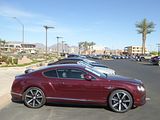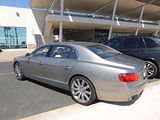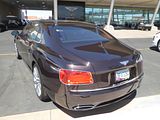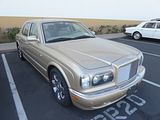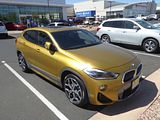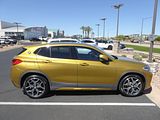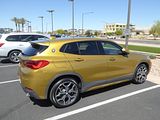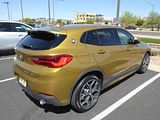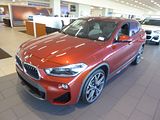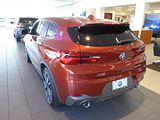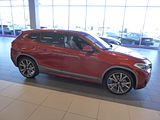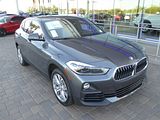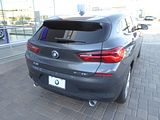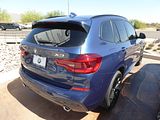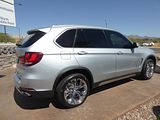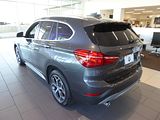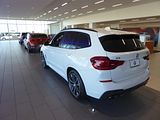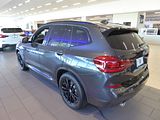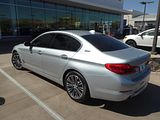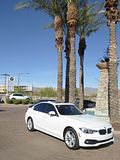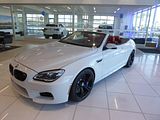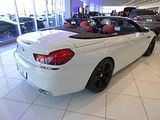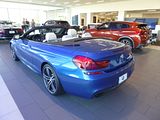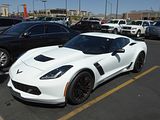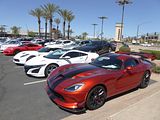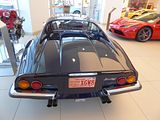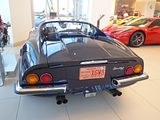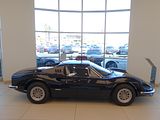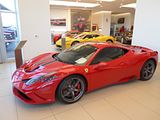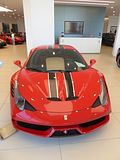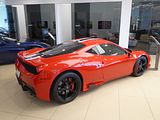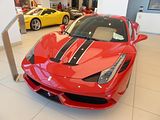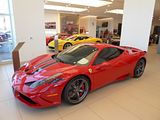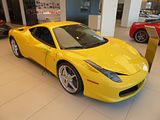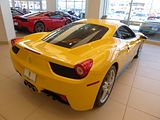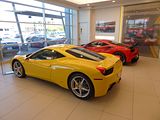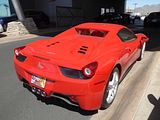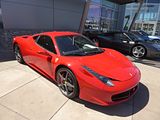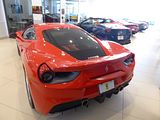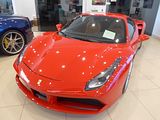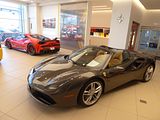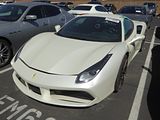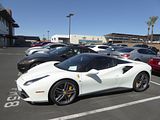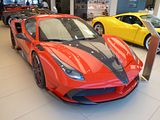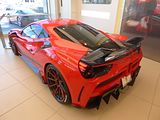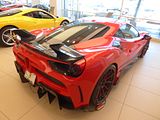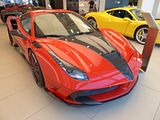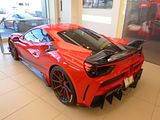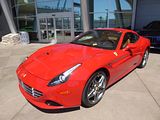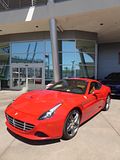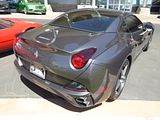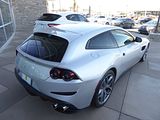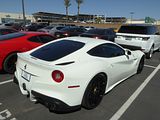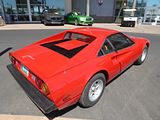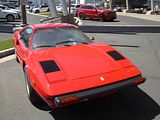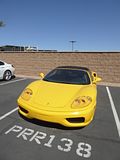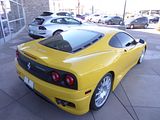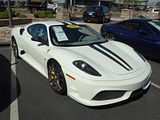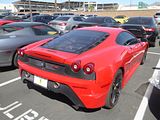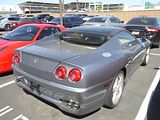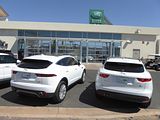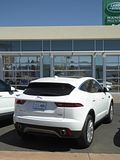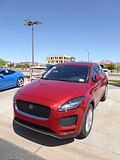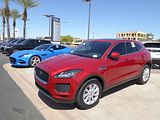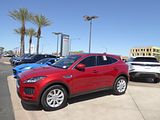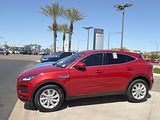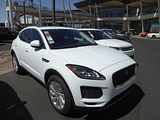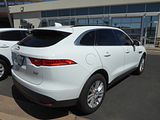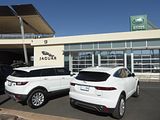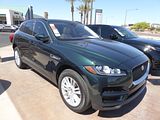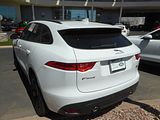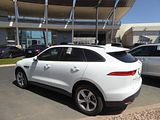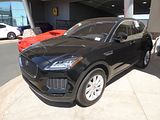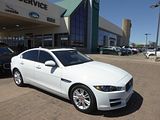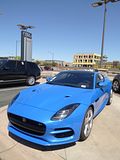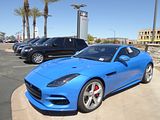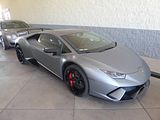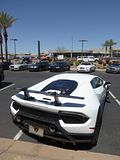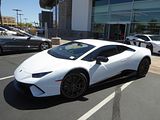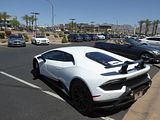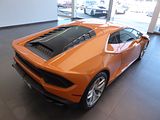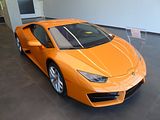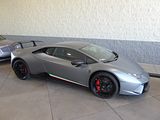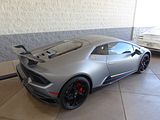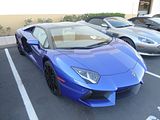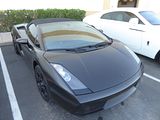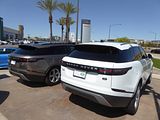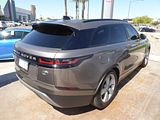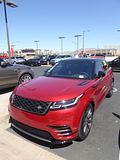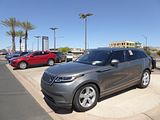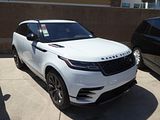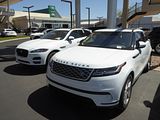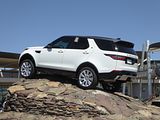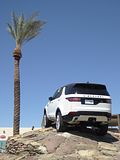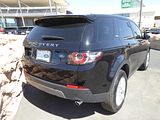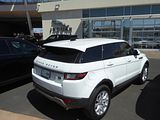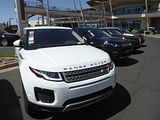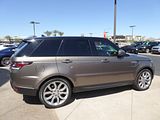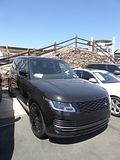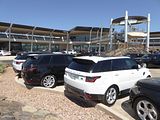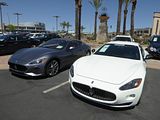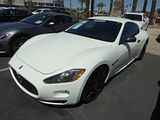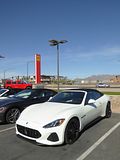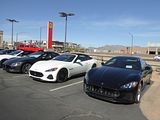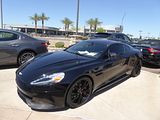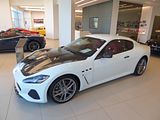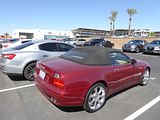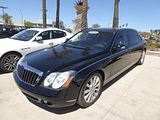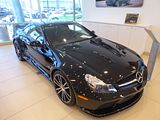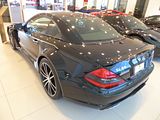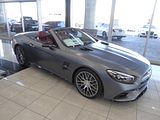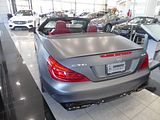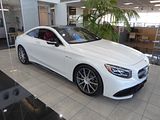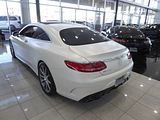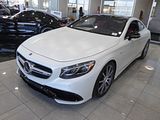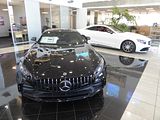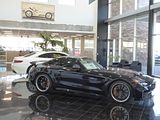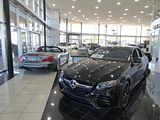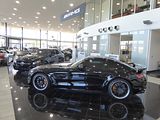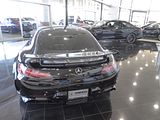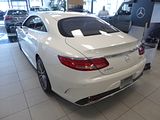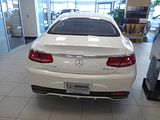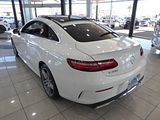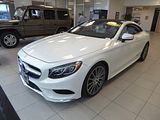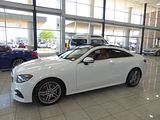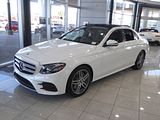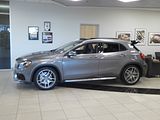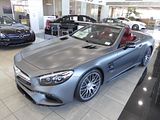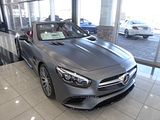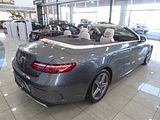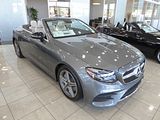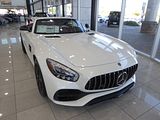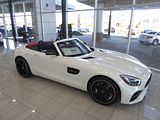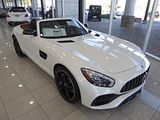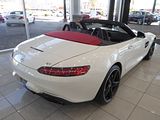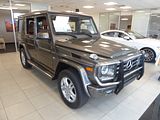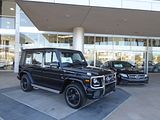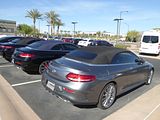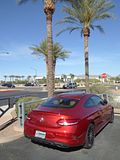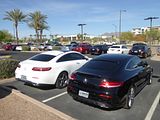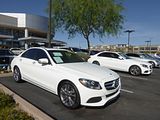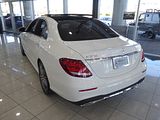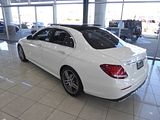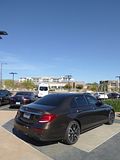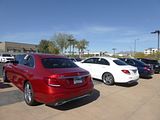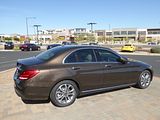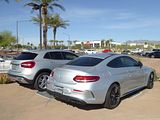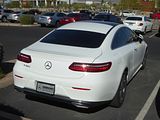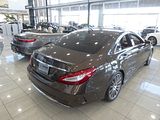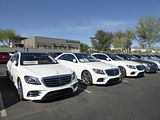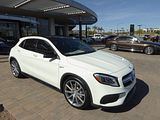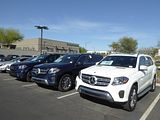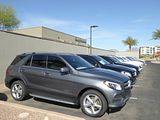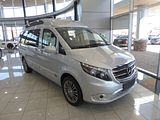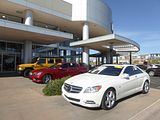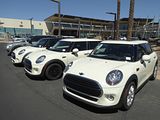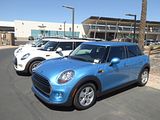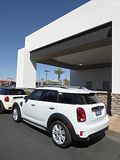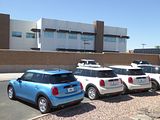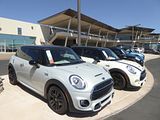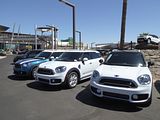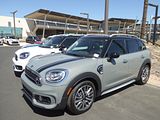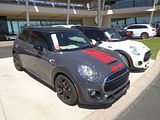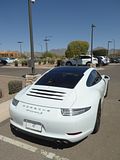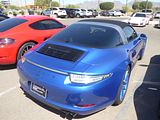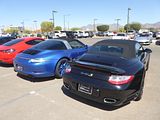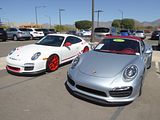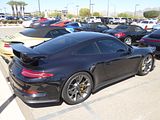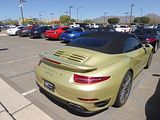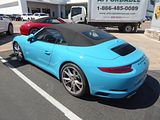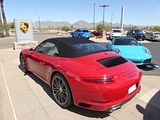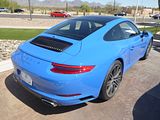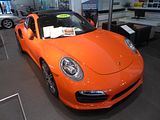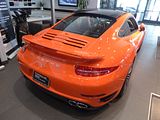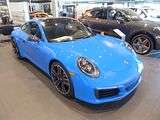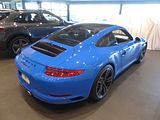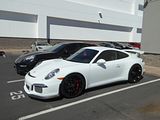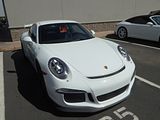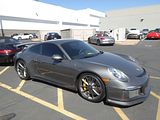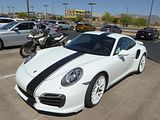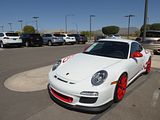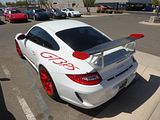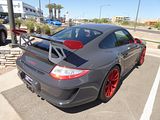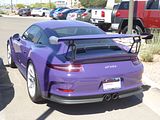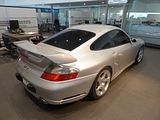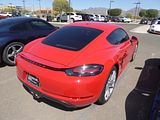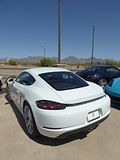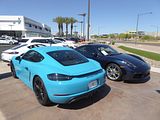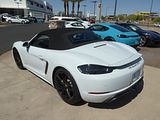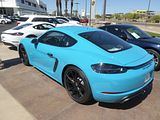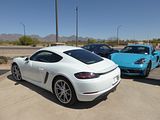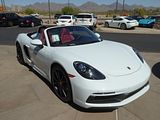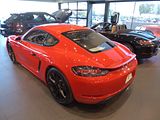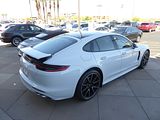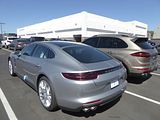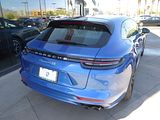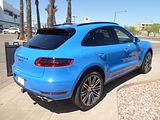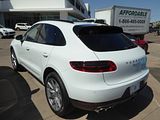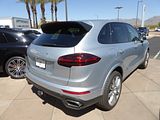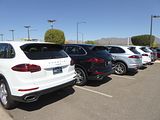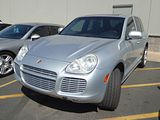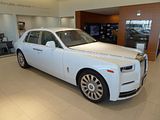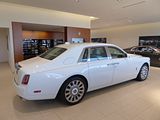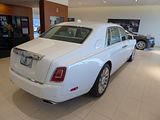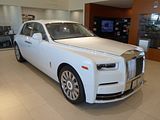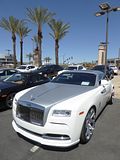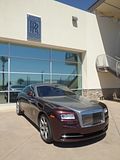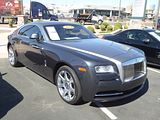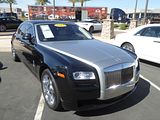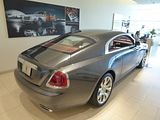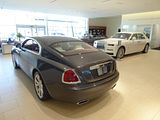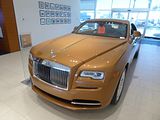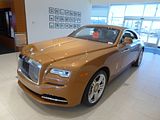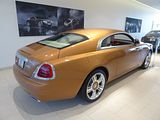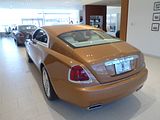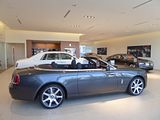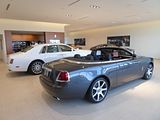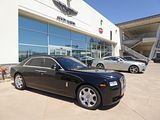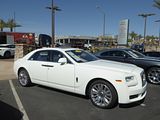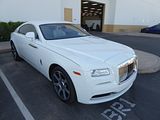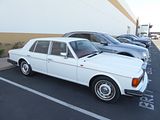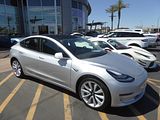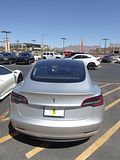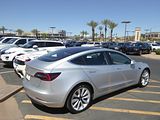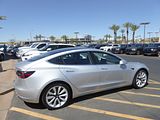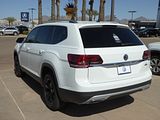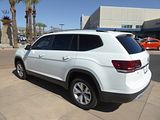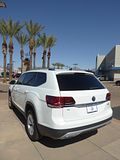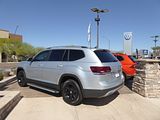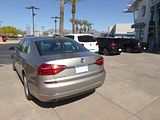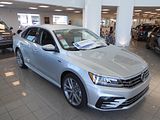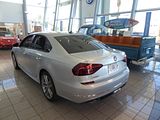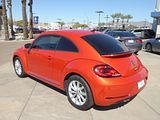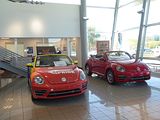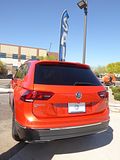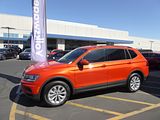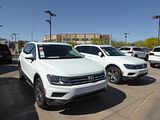There’s a lot of the world out there to go and see, and a vast array of events that take place in it, so when planning my diary for the coming months, there’s always some hard decisions to make, between going somewhere or to something new and repeating favourites. In recent years, my vacation trips have tended rather more to returns to old haunts than perhaps used to be the case. There’s far less planning required and when you find somewhere with the right combination of largely guaranteed good weather, great scenery and hotels that you know to be good, the combination proves hard to resist. And so, for the last several years now, I’ve spent a few days in the Phoenix area, typically in early Spring and very late Summer, when the temperatures are very pleasant, before the onset of the heat that makes outdoor life there a challenge. And when there, the same dilemma around new places to explore and a return to favourites applies. One of those favourites is to spend a few hours at the site which includes the Penske Racing Museum, just off the Scottsdale Road, where there are a number of showrooms for very high-end cars. Visitors area welcome in all the showrooms, and there are always literally thousands of cars parked up outside, as the US expectation of “instant gratification” applies to buying a car, unless it really is a bespoke product, so there is plenty to see. It’s a bit like a Motor Show, really, but without the crowds. And looking back at reports of visits over the years shows the progression not just of the cars on offer, but also how the site itself has evolved. Here’s what I found during my visit in March 2018.
ACURA
Alphabetically, first of the showrooms is for Acura, the premium brand linked to Honda, but whose cars look very different from those of the parent company. It’s actually one of the last of the showrooms that you come across, as it is situated almost at the end of the line, with just Volkswagen beyond it, and it is the one that in recent years I have generally not entered. It’s not very large, and it always seems particularly quiet, which means that you get approached by an eager salesman as soon as you walk in the door. Indeed, in recent times, I have always been approached when looking at the cars outside. When the models offered at their gawkiest, a few years ago, as Acura threw away potential sales with the odd styling touches that compounded woes derived from some rather indifferent product offerings, it was hard to come across as at all enthusiastic about their products at all. And although the styling has become less controversial in the past couple of years, the models remain somewhat uninspired, to my eyes.
There is one exception, of course, and that is the latest NS-X, which, likes its predecessor is badged as an Acura in the US market, rather than the Honda identity it has in the rest of the world. Even in this affluent part of America, these cars are rare.
The best-selling Acura models these days are the duo of crossovers, the MDX and slightly smaller RDX.
Saloon cars that I captured with the camera were the current TLX and its predecessor, the TL, as well as the very slow-selling top of the range RDX.
Final Acura model that I came across was an example of the previous generation NS-X, a rare treat indeed. This is a relatively late model car, as evidenced by the fixed headlights, which came in with the 2001 facelift, and following a legislative change which outlawed pop-up lights in a number of markets. There were some minor mechanical changes as well, and it was in this form that the car ended production in 2005.
ASTON MARTIN
A couple of years ago, the Aston Martin side of what had been a joint showroom with Rolls Royce was partitioned off, with the result that there is now an area that has room for two lines of cars from front to back, which is just sufficient to house an example of each of the models in the current range. And in the next couple of years, that range will undergo a complete transformation as new models arrive to replace the cars that have been offered for the past few years. The first of them is on sale, and that, of course is the DB11, which reached American soil quite some months after European customers were able to take delivery of their cars.
Also on display inside were the elegant four-seater Rapide and the soon to be replaced V12 Vantage.
There don’t tend to be large numbers of Aston Martin models on site, unlike some of the other brands, but I did come across some, both parked near to the showroom, as “pre owned” models, as well as some older cars that were in for service or repair which were further away. V12 powered models to catch my eye and the camera included the current Vanquish and its predecessor, the DBS, seen here in open-topped Volante form.
V8 Vantage N430
The only classic Aston that I spotted on site was this DB7 Volante, parked up in the service area behind the showrooms. With the DB7, produced from September 1994 to December 2004, Aston Martin made more cars from a single model than all Astons previously made, with over 7000 built. Known internally as the NPX project, the DB7 was made mostly with resources from Jaguar and had the financial backing of the Ford Motor Company, owner of Aston Martin from 1988 to 2007. The DB7’s platform was an evolution of the Jaguar XJS’s, though with many changes. The styling started life as the still-born Jaguar F type (XJ41 – coupe / XJ42 – convertible) designed by Keith Helfet. Ford cancelled this car and the general design was grafted onto an XJS platform. The styling received modest changes by Ian Callum so that it looked like an Aston Martin. The first generation Jaguar XK-8 also uses an evolution of the XJ-S/DB7 platform and the cars share a family resemblance, though the Aston Martin was significantly more expensive and rare. The prototype was complete by November 1992, and debuted at the Geneva Motor Show in March, 1993, with the car positioned as an “entry-level” model below the hand-built V8 Virage introduced a few years earlier. With production of the Virage (soon rechristened “V8” following Vantage styling revisions) continuing at Newport Pagnell, a new factory was acquired at Bloxham, Oxfordshire that had previously been used to produce the Jaguar XJ220, where every DB7 would be built throughout its production run. The DB7 and its relatives were the only Aston Martins produced in Bloxham and the only ones with a steel unit construction inherited from Jaguar . Aston Martin had traditionally used aluminium for the bodies of their cars, and models introduced after the DB7 use aluminium for the chassis as well as for many major body parts. The convertible Volante version was unveiled at the North American International Auto Show in Detroit in 1996. Both versions have a supercharged straight-six engine that produced 335 bhp and 361 lb·ft of torque. The Works Service provided a special Driving Dynamics package, which greatly enhanced performance and handling for drivers who wanted more than what the standard configuration offered. In 1999, the more powerful DB7 V12 Vantage was introduced at the Geneva Motor Show. Its 5.9 litre, 48-valve, V12 engine produced 420 bhp and 400 lb·ft of torque. It has a compression ratio of 10.3:1. Transmissions were available with either a TREMEC T-56 six speed manual or a ZF 5HP30 five speed automatic gearbox. Aston Martin claimed it had a top speed of either 186 mph with the manual gearbox or 165 mph with the automatic gearbox, and would accelerate from 0–60 mph in 4.9 seconds. It is 4,692 mm long, 1,830 mm (72.0 in) wide, 1,243 mm (48.9 in) high, with a weight of 1,800 kg (3,968.3 lb). After the launch of the Vantage, sales of the supercharged straight-6 engine DB7 had reduced considerably and so production was ended by mid-1999. In 2002, a new variant was launched, named V12 GT or V12 GTA when equipped with an automatic transmission. It was essentially an improved version of the Vantage, its V12 engine producing 435 bhp and 410 lb·ft of torque for the manual GT, although the automatic GTA retained the 420 bhp and 400 lb·ft of torque of the standard DB7 Vantage. Additionally, the GT and GTA chassis had substantially updated suspension from the DB7 Vantage models. Aesthetically, compared to the Vantage it has a mesh front grille, vents in the bonnet, a boot spoiler, an aluminium gear lever, optional carbon fibre trim and new wheels. It also has 14.0 in front and 13.0 in rear vented disc brakes made by Brembo. When being tested by Jeremy Clarkson on Top Gear in 2003, he demonstrated the car’s ability to pull away in fourth gear and continue until it hit the rev limiter: the speedometer indicated 135 mph. Production of the GT and GTA was extremely limited, as only 190 GT’s and 112 GTA’s were produced worldwide with 17 of them shipped to the US market, for a total of 302 cars
AUDI
A new and larger Audi showroom was built, as the previous one could only house a few cars, and whilst Audi’s US range is not quite as extensive as the European one, with some of the models like the A1 and Avant cars denied to American buyers, more space was clearly felt to be desirable. It is separated from the rest of the linked buildings, and this means that there is also more room for the lines of new and pre-owned cars to be presented as well. Like most brands these days, there is a heavy focus on the SUV/Crossover models, and there were lines of each of the three ranges that Audi offers to Americans here, the Q3, Q5 and Q7. The last of these is a strong seller in America, where its size is seen as a virtue rather than a challenge, but it is the middle of the three which is commercially the most important of the lot, as the Q5 is Audi’s best selling car in this market. The second generation has now reached American soil.
There were plenty of examples of the A badged models, too. Entry point to the US range is the A3, though it is somewhat less extensive than we see in Europe. The three door hatch is not offered at all, and the five door only in eTron guise, with the focus being on the 4 door saloon, and the cabriolet. A3 and S3 models were here.
Similarly, the A4 range is less extensive, as the Avant is not sold here. But the AllRoad is, along with the saloon model.
The second generation A5 range will include the Sportback as well as the Coupe and Cabrio. There were A5 and RS5 cars on show.
And at the top of the range, there were the soon to be replaced A6 and A7 as well as the A8 model which has already been replaced in Europe, but which has yet to arrive in America.
BENTLEY
The Bentayga is now the best-selling Bentley in America, so it was no surprise to find that the model dominated the showroom.
Also here were the Continental GTC and the recently released new Continental GT coupe.
Saloons were represented by the second generation Flying Spur, and – parked up in the service area – an Arnage.
BMW
Latest addition to the BMW range is the X2, a car which is only just going on sale in Europe, and not yet a familiar sight. There were a couple of examples here, and it was my chance to get a closer look. For sure this looks less obviously “crossover” than the other X-badged cars that BMW offers, and it certainly avoids the “Russian Doll” styling links of the X4 to X6, but it is also very pokey inside, with next to no space for anyone in the back and a limited boot. It strikes me as a rather cynical marketing offering that charges a significant premium for a car with limited benefits over cheaper BMW models such as the X1 and 1 Series. Will the market agree? Time will tell.
Other X model BMWs were here as well, of course, with the recently released third generation X3 – a car which looks very similar to the model it replaced – as well as the larger X5. In the showroom, there was a complete collection with the rest of the family, including the front wheel drive X1, and the coupe-styled X4 and X6 available for a closer look.
Also attracting my camera were the latest 5 Series, in 530e guise, the familiar 3 series and the soon to be replaced 6 series represented by an M6 Convertible.
CHEVROLET
There is no GM franchise on site, but the odd example of cars from the General do appear here, most usually the most sporting ones, such as this C7 generation Corvette.
DODGE
The same thing applies for the FCA Group, and again it was the most sporting model of the lot, the recently discontinued SRT/10, as the name of the car that started out as the Viper became known. This was a 2016 model.
FERRARI
This is a good place to come if you want to see Ferrari models, as there are always plenty parked outside the showroom, so most models of the last twenty or so years tend to be in evidence. Sometimes there are some older ones, too, and that was the case on this occasion, with pride of place in the showroom going to a very lovely 246 GT Dino. The Ferrari Dino was created to honour Alfredo ‘Dino’ Ferrari, Enzo Ferrari’s only legitimate son, who sadly died of muscular dystrophy in 1956. Unlike any previous road-going Ferrari, the Dino utilised a V6 engine, the Tipo 156, which Alfredo himself had helped develop and strongly advocated during his working life. Following continued motor racing success and in order to homologate Ferrari’s 1966 Formula Two campaign, a new line of mid-engined production V6 coupés with Fiat running gear went on sale in 1967 in two litre 206 GT form. However, in 1969 a larger 2.4 litre Dino was introduced, named the 246 GT or GTS in the case of the Spider. Only 3,913 definitive Dinos were built before the introduction of the completely restyled V8 engined 308 in 1973. The voluptuous bodywork of the 246, which many regard as the prettiest ever to grace a road-going Ferrari, was designed by Pininfarina and built by Scaglietti. It clothed a tubular chassis which carried wishbone independent suspension at each corner. The compact four-cam, 190bhp engine was mounted transversely above the five-speed gearbox and just ahead of the rear axle, allowing for both a comfortable cockpit and some usable boot space. Prices continue to rise.
Most of the generations of “entry level” Ferrari that have been produced since the Dino were here, too. They have all had V8 engines, unlike the V6 of the Dino, and they have – in line with the market as a whole – got significantly larger. Each one has also been more potent than the car it replaced. Almost all have been received well when new and have remained highly desirable as they age, with prices remaining buoyant. That is certainly the case with the special versions which have been produced, and there has been one of these associated with every generation going back to the 348 of the early 90s. One of the best received of all of these was the 458 Speciale and there was a nice example of this on offer here as well as “regular” 458 Italia cars.
The 488 GTB and Spider took over from the 458, and are current models so it was no surprise to find that these were on display in the showroom and that further examples were parked up outside.
Also in the showroom was this Mansory 488XX Siracusa. This is the second generation Mansory 488 XX Siracusa, the first being based on the Ferrari 458. So when its successor, the Ferrari 488, appeared, Mansory produced this version. Centrepiece of the complete customisation is what they call the “spectacular” body design. But the engine, wheels and interior have also all been given an impressive redesign in the best manufacturing quality. As is to be expected for a genuine Mansory, they did not spare the use of carbon. No company name on the market is so closely associated with carbon as Mansory’s. In our own autoclaves, specialists manufacture and process the ultra-light and high-strength material from motorsport and are, as a result, not dependent on suppliers. This gives absolute freedom in the scope, fit and design of the components. Best proof of this is the completely newly designed body: Besides the optics, the technology also has its highlights, for example the striking air intakes on the front spoiler optimise the flow of fresh air to the radiator. Together with the specially developed front lip this gives a better downforce and more grip when driving at the limit. New, extremely bright daytime running lights give additional passive safety. Ultra-light wheels make their own contribution to the optics and the performance. The forged light alloy wheel rims unite highest stability with exceptionally low weight. By reducing the unsprung mass the wheels react even more agilely and realise every steering command, even under the most extreme conditions. At the front the 9×20 inch rims carry 255/30 high performance tyres, while the rear axle rims in 12×21 inch with 325/25 tyres transfer the power of the engine onto the road. The 3.9 litre engine in the 4XX runs with an optimised motor management and a specially designed exhaust system. This combination results in a power output of 790 bhp at 8,000 rpm. Thanks to a torque of 870 Nm (561 lb ft) at 3,000 rpm the eight cylinder accelerates in just 2.9 seconds (vs the standard car’s 3.0 secs) from zero to one hundred (62 mph). The top speed of 341 km/h (standard: 330 km/h) is also higher than the standard vehicle. The chassis components fitted to the Siracusa have been specially designed for the increased power. These consist of four progressively wound lowering springs. As a result the car’s centre of gravity is 20 mm lower compared to the standard car. In the interior, Mansory have created a command and control centre which perfectly combines functionality and comfort. The steering wheel specially designed for the 4XX in a combination of leather and carbon and the redesigned central console operating panel guarantee optimum control of the vehicle. At the same time, the interior of the super sports car oozes pure luxury. All components of the interior cladding are leather coated, offset with coloured seams. 4XX logos on the seats, the foot-mats and the doorsills round off the refinement. The result is certainly striking, though whether you like it or not will be a case of personal taste.
The California and more recent California T have been commercially the most important Ferrari models since their 2008 launch, with many of the buyers selecting one of these as their first ever Ferrari, and the car has sold steadily even though the early models did not meet with universal acclaim from the press. The T model, the first Ferrari with a Turbo engine may look little different, but is said to be a significant improvement in also every way. Both types were here.
Ferrari also effected something of a transformation with their V12 engined 4 seater car, turning the FF into the GTC4 Lusso, and there were examples of both of these types here, too.
Completing the current range – though it is in the process of being updated to an even more ferocious model – is the F12 Berlinetta, the V12 engined two seater GT car which sits at the top of the regular production car range.
And then there were plenty of cars from the back catalogue. Presenting these in chronological order, the oldest is the 308GTB. The 308 GTB was launched at the Paris Motor Show in 1975 as a direct replacement for the Dino 246. Designed by Pininfarina with sweeping curves and aggressive lines, the 308 has gone on to become one of the most recognised Ferraris of all time. Fitted with a 2.9 litre DOHC V8 engine fed by four Webber 40DCNF Carburettors, the power output of 255bhp was sufficient to propel the 308 from 0 to 60mph in 6.5 seconds and on to a top speed of 159 mph.Tougher emissions standards in the 1980s challenged Ferrari more than many other marques. In 1980, fuel injection was adopted for the first time on the 308 GTB and GTS models, and power dropped quite noticeably fro 240 bhp to 214bhp. Two years later, at the 1982 Paris Motor Show, Ferrari launched the 308 quattrovalvole, in GTB and GTS form. The main change from the 308 GTBi/GTSi it succeeded were the 4-valves per cylinder—hence its name, which pushed output back up to 240 hp restoring some of the performance lost to the emission control equipment. The new model could be recognised by the addition of a slim louvred panel in the front lid to aid radiator exhaust air exit, power operated mirrors carrying a small enamel Ferrari badge, a redesigned radiator grille with rectangular driving lights on each side, and rectangular (in place of round) side repeaters. The interior also received some minor updates, such as a satin black three spoke steering wheel with triangular centre; cloth seat centres became available as an option to the standard full leather. Available included metallic paint, a deep front spoiler, air conditioning, wider wheels, 16-inch Speedline wheels with Pirelli P7 tyres, and a satin black roof aerofoil (standard on Japanese market models). Apart from the 32-valve cylinder heads, the V8 engine was essentially of the same design as that used in the 308 GTSi model. The gear and final drive ratios were altered to suit the revised characteristics of the four valves per cylinder engine. One other significant benefit of the QV four valve heads was the replacement of the non-QV models sodium valves which have been known to fail at the joint between the head and the stem. Bosch K-Jetronic fuel injection and Marelli Digiplex electronic ignition were carried over from the GTBi/GTSi. The car was produced in this form until the launch of the 328 models in the autumn of 1985 which had larger 3.2 litre engines and a number of styling changes. 308 GTB models are becoming increasingly sought after, with prices rising steadily and quite steeply.
Skip forward a couple of generations and you come to the 360 cars. There was a rather nice Spider example of the model here. It was with the 360 Modena that sales of Ferrari models really took off, with unprecedented volumes of the car being sold. The 360 Modena was launched in 1999, named after the town of Modena, the birthplace of Enzo Ferrari. A major innovation in this all new model came from Ferrari’s partnership with Alcoa which resulted in an entirely new all-aluminium space-frame chassis that was 40% stiffer than the F355 which had utilised steel. The design was 28% lighter despite a 10% increase in overall dimensions. Along with a lightweight frame the new Pininfarina body styling deviated from traditions of the previous decade’s sharp angles and flip-up headlights. The new V8 engine, common to all versions, was of 3.6 litre capacity with a flat plane crankshaft, titanium connecting rods and generates 400 bhp Despite what looks like on paper modest gains in reality the power to weight ratio was significantly improved on over the F355, this was due to the combination of both a lighter car and more power. The 0 to 100 km/h acceleration performance improved from 4.6 to 4.3 seconds. The first model to be rolled out was the 360 Modena, available as a manual, or an F1 electrohydraulic manual. Next up was an open car. The 360 was designed with a Spider variant in mind; since removing the roof of a coupe reduces the torsional rigidity, the 360 was built for strength in other areas. Ferrari designers strengthened the sills, stiffened the front of the floorpan and redesigned the windscreen frame. The rear bulkhead had to be stiffened to cut out engine noise from the cabin. The convertible’s necessary dynamic rigidity is provided by additional side reinforcements and a cross brace in front of the engine. Passenger safety is ensured by a strengthened windscreen frame and roll bars. The 360 Spider displays a curvilinear waistline. The fairings imply the start of a roof, and stable roll bars are embedded in these elevations. Due to use of light aluminium construction throughout, the Spider weighs in only 60 kg heavier than the coupé. As with the Modena version, its 3.6 litre V8 with 400 bhp is on display under a glass cover. The engine — confined in space by the convertible’s top’s storage area — acquires additional air supply through especially large side grills. The intake manifolds were moved toward the center of the engine between the air supply conduits in the Spider engine compartment, as opposed to lying apart as with the Modena. In terms of performance, the 0-60 mph time was slightly slower at 4.4 seconds due to the slight weight increase, and the top speed was reduced from 189 to 180 mph. Despite the car’s mid-mounted V8 engine, the electrically operated top is able to stow into the compartment when not in use. The convertible top was available in black, blue, grey and beige. The transformation from a closed top to an open-air convertible is a two-stage folding-action that has been dubbed “a stunning 20 second mechanical symphony”. The interior of the Spider is identical to that of the coupé.
There was also a 360 Challenge Stradale. This was a low production track day focused car based on the 360 Modena. From a handling and braking performance perspective was the equivalent of adding a FHP (Fiorano Handling Pack) to the 360, which was available for V12 models such as the 550, 575 or F599 but never separately for the V8’s. It was inspired by the 360 Modena Challenge racing car series so the focus was primarily on improving its track lapping performance credentials by concentrating on handling, braking and weight reduction characteristics, which are essential in pure racing cars. Ferrari engineers designed the car from the outset with a goal of 20% track day use in mind and 80% road use. With only a small 20 bhp improvement in engine power from the Modena (and boasting an improved power-to-weight ratio) the Challenge Stradale accelerates from 0 to 100 km/h (62 mph) in 4.1 seconds according to Ferrari, four tenths faster than a Modena, but bald figures do not paint the full picture. For the enthusiastic driver the differences are truly staggering; genuine systematic improvements were achieved to the setup and feel of the whole car. Throttle response from the digital throttle was ratcheted up and feedback through the steering wheel was enhanced. The responsiveness of the controls, the balance of the chassis, the braking performance and the driver feedback all contribute greatly to the overall driving experience. Thanks to CCM brakes borrowed from the Enzo, some lower weight parts and a FHP handling pack, the Challenge Stradale was able to claim an impressive 3.5 seconds improvement per lap of its Fiorano circuit compared to the Modena (the target was 2.5 seconds). In total, the Challenge Stradale is up to 110 kg (243 lb) lighter than the standard Modena if all the lightweight options are specified such as deleted radio, lexan (plexiglass) door window and Alcantara fabric (instead of the leather option). As much as 74 kilograms (207 lb) was taken off on the car by lightening the bumpers, stripping the interior of its sound deadening and carbon mirrors and making the optional Modena carbon seats standard. Resin Transfer Moulding was utilised for the bumpers and skirts, a carry over from the Challenge cars which resulted in lighter bumpers than on the Modena. The engine and transmission weight was slimmed down 11 kg (24 lb) through the use of a smaller, lighter weight sports (yet still stainless steel) exhaust back box and valved exit pipes. The Challenge Stradale also got Brembo carbon ceramic brakes as standard (which later became standard fitment on the F430) which shaved 16 kg off the curb weight and improved handling by reducing unsprung weight and completely eliminating brake fade. Cars fitted with the centre console stereo option, sub speaker box behind the seats and glass side windows re-gained approximately 30 kg over the best selected options (from a weight perspective). Challenge Stradale models are much sought after these days, and when they do come up for sale, they command a huge premium over the regular 360 Modena cars.
Replacement for the 360 came with the F430 and there was one of these here as well. The F430 debuted at the 2004 Paris Motor Show. Designed by Pininfarina, under the guidance of Frank Stephenson, the body styling of the F430 was revised from its predecessor, the Ferrari 360, to improve its aerodynamic efficiency. Although the drag coefficient remained the same, downforce was greatly enhanced. Despite sharing the same basic Alcoa Aluminium chassis, roof line, doors and glass, the car looked significantly different from the 360. A great deal of Ferrari heritage was included in the exterior design. At the rear, the Enzo’s tail lights and interior vents were added. The car’s name was etched into the Testarossa-styled driver’s side mirror. The large oval openings in the front bumper are reminiscent of Ferrari racing models from the 60s, specifically the 156 “sharknose” Formula One car and 250 TR61 Le Mans cars of Phil Hill. Designed with soft-top-convertible. The F430 featured a 4.3 litre V8 petrol engine of the “Ferrari-Maserati” F136 family. This new power plant was a significant departure for Ferrari, as all previous Ferrari V8’s were descendants of the Dino racing program of the 1950s. This fifty-year development cycle came to an end with the entirely new unit. The engine’s output was 490 hp at 8500 rpm and 343 lb/ft of torque at 5250 rpm, 80% of which was available below 3500rpm. Despite a 20% increase in displacement, engine weight grew by only 4 kg and engine dimensions were decreased, for easier packaging. The connecting rods, pistons and crankshaft were all entirely new, while the four-valve cylinder head, valves and intake trumpets were copied directly from Formula 1 engines, for ideal volumetric efficiency. The F430 has a top speed in excess of 196 mph and could accelerate from 0 to 100 km/h in 3.9 seconds, 0.6 seconds quicker than the old model. The brakes on the F430 were designed in close cooperation with Brembo (who did the calipers and discs) and Bosch (who did the electronics package),resulting in a new cast-iron alloy for the discs. The new alloy includes molybdenum which has better heat dissipation performance. The F430 was also available with the optional Carbon fibre-reinforced Silicon Carbide (C/SiC) ceramic composite brake package. Ferrari claims the carbon ceramic brakes will not fade even after 300-360 laps at their test track. The F430 featured the E-Diff, a computer-controlled limited slip active differential which can vary the distribution of torque based on inputs such as steering angle and lateral acceleration. Other notable features include the first application of Ferrari’s manettino steering wheel-mounted control knob. Drivers can select from five different settings which modify the vehicle’s ESC system, “Skyhook” electronic suspension, transmission behaviour, throttle response, and E-Diff. The feature is similar to Land Rover’s “Terrain Response” system. The Ferrari F430 was also released with exclusive Goodyear Eagle F1 GSD3 EMT tyres, which have a V-shaped tread design, run-flat capability, and OneTRED technology. The F430 Spider, Ferrari’s 21st road going convertible, made its world premiere at the 2005 Geneva Motor Show. The car was designed by Pininfarina with aerodynamic simulation programs also used for Formula 1 cars. The roof panel automatically folds away inside a space above the engine bay. The conversion from a closed top to an open-air convertible is a two-stage folding-action. The interior of the Spider is identical to that of the coupé. Serving as the successor to the Challenge Stradale, the 430 Scuderia was unveiled by Michael Schumacher at the 2007 Frankfurt Auto Show. Aimed to compete with cars like the Porsche RS-models and the Lamborghini Gallardo Superleggera it was lighter by 100 kg/220 lb and more powerful (510 PS) than the standard F430. Increased power came from a revised intake, exhaust, and an ion-sensing knock-detection system that allows for a higher compression ratio. Thus the weight-to-power ratio was reduced from 2.96 kg/hp to 2.5 kg/hp. In addition to the weight saving measures, the Scuderia semi-automatic transmission gained improved “Superfast”, known as “Superfast2”, software for faster 60 millisecond shift-times. A new traction control system combined the F1-Trac traction and stability control with the E-Diff electronic differential. The Ferrari 430 Scuderia accelerates from 0-100 km/h in 3.6 seconds, with a top speed of 202 miles per hour. Ferrari claimed that around their test track, Fiorano Circuit, it matched the Ferrari Enzo, and the Ferrari F430’s successor, the Ferrari 458. To commemorate Ferrari’s 16th victory in the Formula 1 Constructor’s World Championship in 2008, Ferrari unveiled the Scuderia Spider 16M at World Finals in Mugello. It is effectively a convertible version of the 430 Scuderia. The engine produces 510 PS at 8500 rpm. The car has a dry weight of 1,340 kg, making it 80 kg lighter than the F430 Spider, at a curb weight of 1,440 kg (3,175 lb). The chassis was stiffened to cope with the extra performance available and the car featured many carbon fibre parts as standard. Specially lightened front and rear bumpers (compared to the 430 Scuderia) were a further sign of the efforts Ferrari was putting into this convertible track car for the road. Unique 5-spoke forged wheels were produced for the 16M’s launch and helped to considerably reduce unsprung weight with larger front brakes and callipers added for extra stopping power (also featured on 430 Scuderia). It accelerates from 0-100 km/h in 3.7 seconds, with a top speed of 315 km/h (196 mph). 499 vehicles were released beginning early 2009 and all were pre-sold to select clients.
And final Ferrari of note was a 575 SuperAmerica. This was created to satisfy demand for open-topped V12 motoring and with a rather better roof arrangement than had been on the 550 Barchetta. The 575M Superamerica featured an electrochromic glass panel roof which rotated 180° (both of these attributes being production car firsts) at the rear to lie flat over the boot. The patented Revocromico roof incorporates a carbon fibre structure that is hinged on the single axis with a luggage compartment lid, allowing the access to the latter even with an open roof. With the roof open the rear window, apart for holding the third stop light, also acts as a wind deflector. This roof design was previously used on the 2001-designed Vola by Leonardo Fioravanti. The Superamerica used the higher-output tune of the V-12 engine, F133 G, rated at 533 hp and Ferrari marketed it as the world’s fastest convertible, with a top speed of 199 mph. The GTC handling package was optional. A total of 559 Superamericas were built; this number followed Enzo Ferrari’s philosophy that there should always be one fewer car available than what the market demanded.
JAGUAR
Although America had quite a long wait before receiving supplies of the F-Pace and the XE, the E-Pace has arrived far more quickly, and there were plenty of examples of this commercially vital new model here. As they are only just being made available in Europe, this was my first chance to get a good look, and also to see E-Pace and F-Pace parked together. And when you do see them like this, the styling differences are obvious, so in fact, despite what I concluded from the initial launch pictures, I think it will be quite easy to tell them apart.
Other Jaguar models to attract the camera were the XE and the F Type.
LAMBORGHINI
The Lamborghini showroom was separated from the Bentley area a couple of years ago, and there’s not that much space for displaying cars, with only 3 models on show, but there were more cars parked up outside. They were in an area which was half shadow and half very bright sunlight, which challenges the photographer more than somewhat (you have to wait til the sun moves around, or the dealer moves the car somewhere else – both of which happened during my visit). The new cars here were all Huracan models including the recently released Performante version.
I did also come across an Aventador and a Gallardo Spider.
LAND ROVER
Land Rover share a showroom with sister company Jaguar and also have lines of cars parked up in front of it and out the back, but they also have a soft “off road” area for their displays, with some very steep slopes created out of large rocks, allowing visitors and potential customers to get the impression of the sort of terrain that these vehicles could traverse. The full range of products were on show here. Newest addition to the range is the Velar, a car which I had sampled in Los Angeles earlier in the trip, and which impressed me greatly in most respects.
When the latest, fifth generation Discovery was launched in America, the decision was taken to resume the use of the Discovery badging, which had been abandoned with its predecessor being called the LR4 (and there was the LR3 before that).
Indeed, the same philosophy applied to the smaller model, the Discovery Sport, which took over from a car we knew in Europe as the Freelander, but in an effort to disassociate itself from a reputation problem from the early models had become the LR2 to Americans.
There were no such issues with the Evoque, which has sold well in the US, just as it has in the rest of the world.
Completing the range are the Range Rover and Range Rover Sport, and there were several of those on site, too.
MASERATI
As I knew from previous visits, this is definitely the place to come if you want to check out more or less every available colour on a Maserati, as there are rows of each of the Levante, Ghibli and Quattroporte parked up outside the showroom.
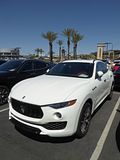
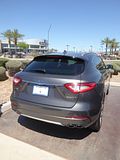
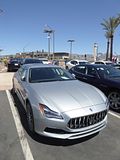
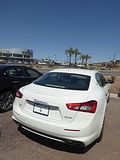
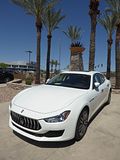
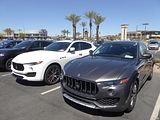
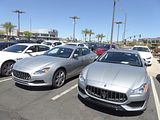

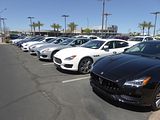
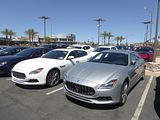
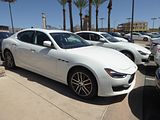
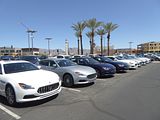
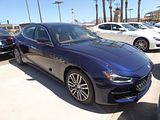
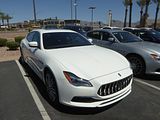


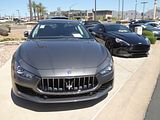
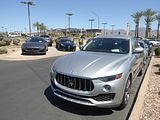
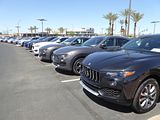
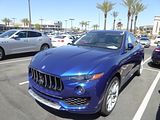
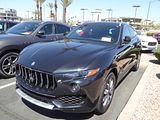
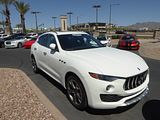
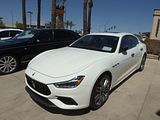
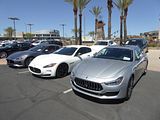
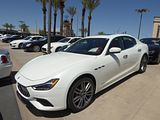
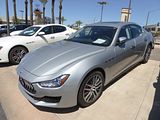
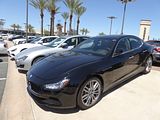

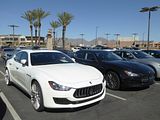
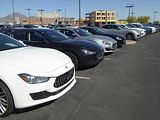
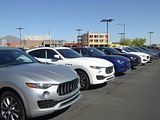
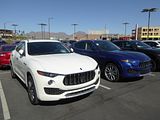
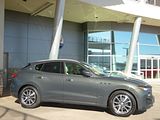
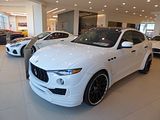
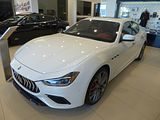
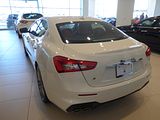
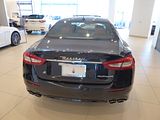
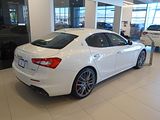
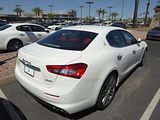

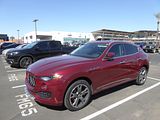
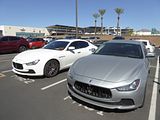
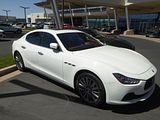
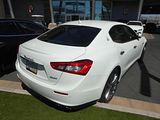
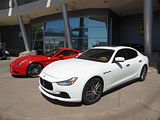
Also here was the still current GranTurismo, with one of the MC Stradale versions in the showroom, and I also spotted its predecessor, the 4200 Spider.
MAYBACH
A reminder of the ill-fated attempt by Mercedes to resurrect the Maybach brand as something special over and above the S Class Mercedes came when I spotted this Maybach 57 model parked up.
MERCEDES-BENZ
Sole Mercedes on the Penske site was this SL65 AMG Black Series. This was created for those who thought that the regular 604 bhp SL65 AMG was not quite fast or special enough. It was unveiled in Monterey in 2008. It generated 661 bhp from its twin turbocharged V12 engine, in which, compared to the regular SL65 AMG, the turbochargers were 12% larger, and the optimised wastegate ducts permit increased air throughout. Intake air ducting and exhaust system are modified to improve response and reduce the exhaust gas backpressure. The Black Series is 250 kilograms (550 lb) lighter than regular SL 65 AMG by the use of light carbon fibre composites (CFRP) parts and the omission of the SL’s normal foldable hardtop roof, replacing it with a fixed roof. Not only did this save weight, it also made room available for the retractable rear spoiler. The top speed was limited to about 200 mph-(322 km/h) and the car can go from 0-62 mph-(0–100 km/h) in 3.8 seconds. A limited number were produced over the next three years. The AMG Speedshift Plus five-speed automatic transmission include “C”, “S”, “M1” and “M2” which has gearshift times 25 percent quicker than the “M1” mode. The Black Series front axle track width is 97 millimetres wider and the rear axle track width 85 millimetres wider over regular model. Other changes include retractable rear spoiler and the rear apron with diffuser fins, 265/35R19 front tyres with 19×9.5 inch AMG light-alloy wheels and AMG 20×11.5-inch light-alloy wheels with 325/30R20 tyres (Dunlop Sport Maxx GT tyres), 6-piston front calipers with 390x36mm discs and 4-piston calipers with 360x26mm discs. The car was perceived as very expensive when new, though the market now seems more wiling to accept (and buy) cars like this!
Penske’s Mercedes franchise is elsewhere in the Scottsdale area, as there is a rival firm selling the products of the Three Pointed Star in this area. This is the Schumacher Group, and their showrooms is across the road from all the others that I visited. It is large enough to contain an example of most of the different body styles that are sold in America, but as Mercedes’ range is vast (even if not quite so extensive for Americans as it is for Europeans), to see the widest display, you need to walk around outside as well. On previous occasions, the sales staff here have told me that they sell the greatest number of AMG models anywhere in America – a claim that is not hard to believe as Scottsdale is an area for wealthy people – so there is a lot of showroom space given over to this part of the range. Among them were an SL63, a C63 Coupe, a S63 Coupe, a GT S and GLA.
Other cars in the showroom included the small SLC two-seater and the AMG GT Roadster.
The outgoing G Wagen was also here.
As with the Penske showrooms, what you will find inside is just a taster of the much larger range of cars that are stocked on site, and if you go outside this showroom and walk around the back, there are long lines of every model type that Mercedes sells in the US.
There’s a far more restricted range of C Class models available in the US, with the car coming only as a C300 (which means a 2 litre Turbo 4) or the AMG C63, and in saloon, coupe or convertible bodies, the estate not being offered.
Go up a size and you get to the E Class and there were plenty of Saloon and Coupe models available for inspection.
The third generation CLS has yet to reach American shores, so it was the second generation car on display, and only as a saloon, the SportBrake version not being sold in America.
There were lines of the prestige S Class saloon here, too.
And there were plenty of the crossover models, starting with the GLA, and going through the GLE to the large GLS.
And then there is the Metris – actually the cheapest Mercedes available in America, if you go purely for an entry level model with no options. This is better known in Europe as the Vito, of course.
Final Mercedes of note was this CL500, an example of the third generation to bear the CL name, the C216 series. After 6 years of development, the new model was officially unveiled at the end of June 2006 and was presented at the 2006 Paris Salon. Like its predecessors, the C216 has no B-pillar interrupting the sleek curve of the side windows. There were four models, each with its own engine and transmission, the 5.5 litre V8-powered CL 500 (available with 4MATIC all-wheel drive, which is standard in Canada and the USA), the high-performance 6.2 litre V8-powered CL 63 AMG (with optional performance package variant) and the ultra-luxury twin-turbo 5.5 litre V12-powered CL 600 and, lastly, the CL 65 AMG with a twin-turbo 6.0 litre V12 engine. The CL 500 is sold as the CL 550 in some markets (including the U.S.). The class is based on the chassis of the W221 S-Class, which shares the same powertrains, although there are V6 and hybrid engines for the S not available for the CL. The two-door coupé weighs 2,045 kg (4,508 lb), being heavier than the equivalent S saloon, and rides on a full-size 116.3-inch wheelbase (albeit 8.2 inches less than the long wheelbase S-Class, which is the only S-Class sold in the U.S.). Despite its large size, rear seat legroom is limited in keeping in the tradition of 2+2 luxury coupés, though CL has more rear passenger space than its rivals. The CL’s boot is as large as that of the Audi A8 flagship saloon. The C216 makes use of the Distronic Plus cruise control, which debuted on the 2007 S-Class. This system is able to bring the car to a complete stop, and accelerate again to the pre-set speed, to keep a pre-set distance away from the car ahead of it. This Mercedes-Benz CL also debuted with the new Active NightVision program that enables drivers to view the conditions in front of the car despite the dark surroundings. In 2007, 40 CL 65 AMG units were sold as 40th Anniversary Edition, to celebrate AMG’s founding 40 years earlier. Performance wise, the ’40th Anniversary Edition’ was a custom CL 65 AMG. Changes to the car included a ‘ONE OUT OF 40’ badge near the COMAND controller, special upholstery and rooflining, and a special ‘AMG Alubeam’ paintfinish. Apart from the CL 65 AMG 40th Anniversary Edition, only a small selection of showcars got an Alubeam finish, a special paint designed to gleam like liquid metal. The facelift version of the Mercedes CL-Class made its world debut in July 2010 at the Goodwood Festival of Speed. The new CL-Class came with an improved exterior and interior, but the biggest changes are found under the bonnet. The exterior got a new grille, bi-xenon headlights with LED technology, LED fog lamps, revised wings and bonnet, and new exhaust pipes. For the interior the biggest change was the addition of a new wood trim. This revised CL-Class was also offered with all the latest technologies including: Active Blind Spot Assist, Attention Assist, Active Lane Keeping Assist, Night View Assist Plus, and Active Body Control. The model line-up started with the entry-level CL 500 (550 in the US) powered by a new 4,663cc V8 direct-injected engine that delivered 435 PS (429 hp) and 700 N⋅m (516 lb⋅ft) of torque, paired to a new seven speed automatic transmission, which accelerates from 0 to 60 mph in 4.9 seconds. The CL 600 retained the twin-turbo 5.5 L V12 engine and five-speed automatic with a total output of 517 PS (510 hp) and 830 N⋅m (612 lb⋅ft) of torque. It sprints from 0 to 60 mph in 4.0 seconds. Both vehicles are limited to 250 km/h. The CL 63 AMG is powered by a new direct injection, 5.5-litre V8 engine (a larger displacement version of the CL 550’s) mated to a 7-speed MCT dual-clutch transmission with a total output of 525 PS (518 hp) and 800 N⋅m (590 lb⋅ft) of torque. The CL 65 AMG’s V12 engine has been tweaked to deliver 630 PS (621 hp) and 1,000 N⋅m (738 lb⋅ft) of torque, mated to a 5-speed automatic with AMG speedshift. It was replaced by the S Class Coupe in 2014.
MINI
The MINI showroom is a very colourful one relative to the other constructions on the site, but it is also quite small, with cars displayed around the perimeter and the rest of the space used for, well, I am not quite sure what, but it is not accessible to visitors. But fear not, if you want to see MINI models, then there are dozens and dozens of them, parked up in rows by model type, around the back of the facility, as well as a number close to the showroom which are the used cars and the courtesy cars offered out to customers when their cars are in for service. The three door model is sold as the “Coupe” in America, and there were plenty of those as well as the slightly longer five door hatch, the Cabrio and the second generation Clubman and Countryman. Here’s the chance to contrast many of the different colours and options such as contrasting roofs, stickers and the like.
PORSCHE
The Porsche area is always well worth spending time in. The showroom was busy, as is generally the case whenever I have visited, with plenty of serious customers eager to discuss a deal on a car, though there is usually someone free to at least check if there is anything that they can help me with and to talk to for a few minutes. And then outside, there are lines and lines of new cars, with an even larger number of older models parked up around the back, either in for service or in stock as used examples. If you want to see a 911 model, almost any of the vast array of different ones that have been produced from the preceding 20 years or so, chances are you will be in luck here. Clearly the most prominent ones are the new cars, which means the 991.2 generation, and there were examples of this extensive range aplenty.
There were also lots of what you could call the “special” models, by which I mean the GT3 and GT3 RS cars and a rather rarer 996 GT2.
There were plenty of the smaller 718 Boxster and Cayman models, many of them in nice bright colours, though whether you would want to live with one or two of them would be something you might have to think about for more than a couple of minutes.
America had quite a wait for the second generation Panamera but the model is available in this market now and it has been joined by the recently introduced SportTurismo and a number of these were parked up outside the showroom.
These days it is the Macan and the Cayenne which constitute a significant percentage of Porsche sales and which keep the company viable and able to produce those special 911s and the other sports cars and there were lines of both models here, ready and waiting for their first owner. I also came across a few of the first generation Cayenne here, showing how the styling did soften somewhat from those early cars which so shocked the purists.
ROLLS ROYCE
Pride of place in the Rolls Royce showroom went to the new Phantom, the eight generation car to bear the name. Revealed in the summer of 2017, the model is starting to filter out to dealerships around the world and the first drives are appearing in the world’s motoring press. When seen in the metal, it is more distinctly different from its predecessor than was apparent from the launch photos. It’s huge, imposing and exactly how you imagine a modern Rolls Royce should be, to my mind.
Joining it in the showroom were examples of the Wraith and Dawn and there were several more of these cars both in front and behind the showroom. Although smaller than the Phantom, these are still large cars, but very dignified (until the after-market customisers get to them!).
Also here, though there were rather fewer examples on site was the Ghost, the saloon model on which the Wraith and Dawn are based.
Parked up in the service area was this Silver Spirit, and what struck me was just how small it seemed. And yet, when the car was new, back in 1980, this was very much a large car, rather bigger than even executive saloons like a BMW 5 Series let alone a Ford Granada.
TESLA
Parked up outside was a Model 3. This long and eagerly awaited car, the third in Tesla’s current range, though of course the fourth different model that the company has offered, has been in the news a lot in recent months, mostly for all the wrong reasons, with plenty of column inches and web pages expanded on the woes of getting the car into production and scaling that up to meet the massive demand. We are assured by the often rather unconvincing Tesla PR machine that all that is now solved, and that these cars are being produced in volume now, and if this is true then they are destined to become a common sight at least on US roads. This was the first one I had ever seen that was not on a show stand.
VOLKSWAGEN
The Volkswagen showroom is at the very end of the line, but it is always worth walking this far, as in addition to a plentiful supply of the very latest models, for years there have been a number of classic VW on show. Most of these are notionally for sale, too, though the cars have not changed in all the time that I have been visiting, with the exception of the fact that my favourite, a bright orange “Thing”, as the 181 Trekka was known to US buyers, did disappear a couple of years ago, its $28,000 price tag having clearly not been a disincentive to someone. That means that what remains are examples of the traditional Beetle and the Type 2, so beloved of the surfer community in the adjoining State.
As to the cars that you can buy brand new, the US range looks quite different to the European one. Reflecting the relentless move towards Crossovers, VW came up with a US-specific and US built model, the Atlas, which went on sale a few months prior to this visit, and there were several of these on show. This will now sit at the top of the range, with the third generation Touareg, a similarly-sized model not going to be offered to American buyers.
For those who want a saloon model, then VW have two offerings. with names that will be familiar to Europeans, but styling which is not. Larger of the duo is the Passat, and the model sold in America is different to the European ones. It is a little larger, and only offered as a saloon. When launched in 2012, it was accoladed as “Car of the Year” by Motor Trend magazine, and certainly it impressed me not least for its characterful 5 cylinder engine. But that was 2012 and it has received only modest updates since then, whilst all its rivals have been refreshed with completely new models. A test of one a couple of years ago led me to conclude that whilst it is still a perfectly pleasant car, it no longer stands out as class leader, and the market rather agrees, with modest sales in a class that is steadily declining in favour of SUVs.
VW America’s biggest seller remains the Jetta, a model which is built in Mexico (just don’t tell the President!), and again which has no obvious stand out features to mark it out above its rivals. It is interesting to note that when this generation car was released, the press all moaned at the cost reduction approach that had been taken with things like the loss of independent rear suspension and cheaper plastics, and yet sales went up. Gradually, most of the cost take-outs were reversed, but sales have not continued to rise. An all new model is due imminently.
Other models to catch my eye and the camera were the latest version of the Beetle and the Tiguan, sold in both the standard 5 seater and extended 7 seater guises.
As on previous occasions, I enjoyed the time I spent on site looking at all these cars. In most of the showrooms there was a “greeter” or one of the sales staff fairly quickly appeared and asked if they could help, but when I said I was just looking, most either left me to it, or in a couple of cases, they went off and came back with a welcome bottle of water, before engaging in a few minutes conversation, even though all knew that my accent gave away the game that I was unlikely to be buying anything from them on this occasion or in the future. Plenty of other people on site clearly were, though, as most of the sales staff in the larger showrooms were busily engaged with clients. By the time of my next visit, likely at the end of September, we will be onto the 2019 model year and there will be new and different models to see. No doubt I will stop by to have a look.



